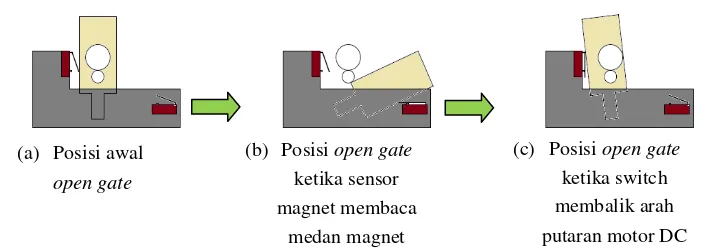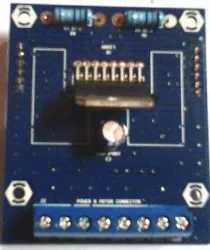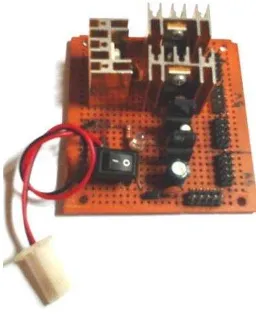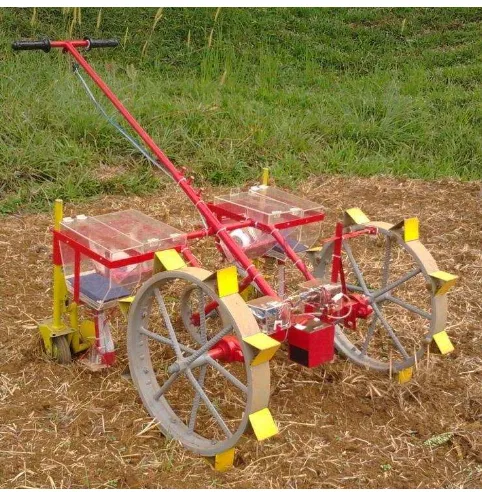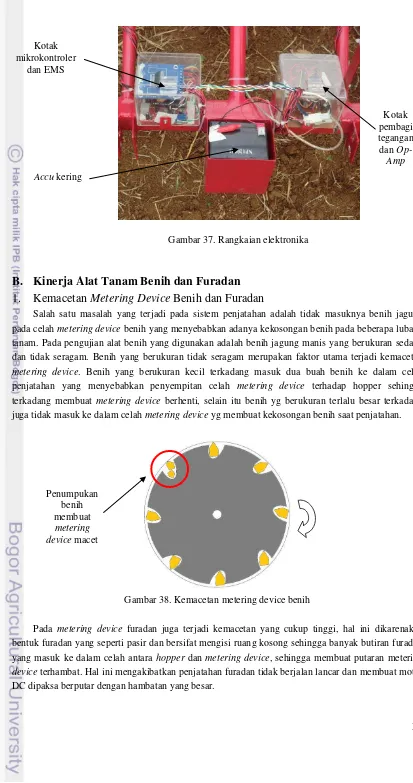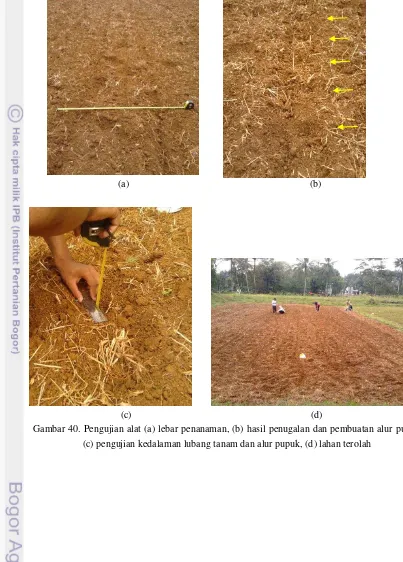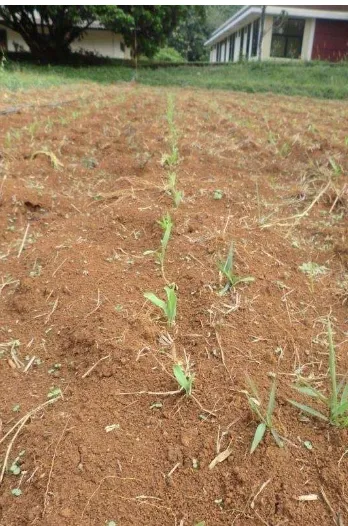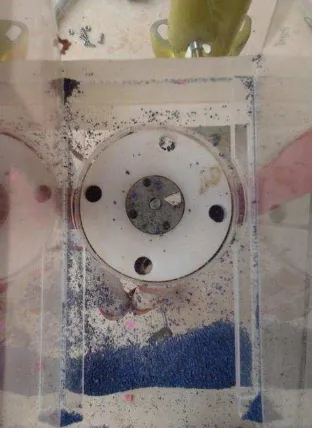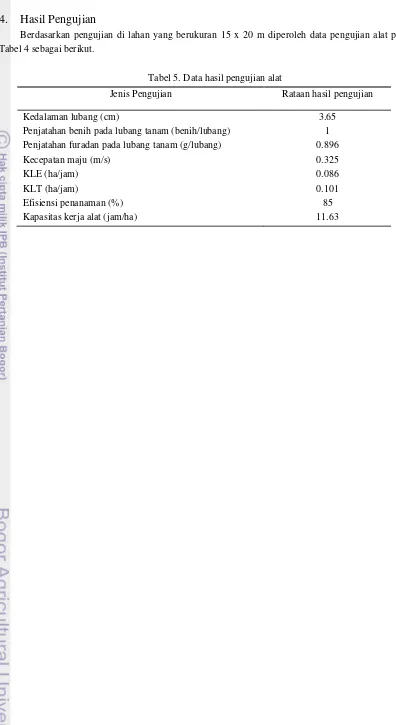Informasi Dokumen
- Penulis:
- Kudang Boro Seminar
- Yunius Girry Wijaya
- Sekolah: Bogor Agricultural University
- Mata Pelajaran: Mechanical and Biosystem Engineering
- Topik: Designing Of Microcontroller-Based Automatic Corn Seed Planter
- Tipe: graduation project
- Tahun: 2010
- Kota: Bogor
Ringkasan Dokumen
I. Introduction
The introduction provides a comprehensive overview of the necessity for an automatic corn seed planter in Indonesia. It highlights the inefficiencies of traditional planting methods and the increasing demand for corn as a primary energy source. The section emphasizes the importance of improving corn production to achieve food self-sufficiency in Indonesia. It sets the stage for the research objectives, which focus on designing and testing an automatic seed planter that operates efficiently with minimal human effort. This aligns with educational goals by illustrating the application of engineering principles in agriculture.
II. Literature Review
This section reviews existing literature on corn cultivation and the factors affecting productivity, such as soil conditions and planting distance. It discusses various planting techniques and the importance of uniform seed spacing for optimal growth. The review also covers the mechanical and electronic components necessary for seed planting machines, providing a theoretical foundation for the design of the automatic seed planter. This knowledge is crucial for students and researchers as it integrates agricultural science with engineering, fostering interdisciplinary learning.
2.1 Corn Cultivation
The cultivation of corn is influenced by various factors, including soil type, pH, and moisture. Understanding these factors is essential for designing a seed planter that meets the specific needs of corn crops. This subsection emphasizes the significance of soil preparation and planting techniques, which are vital topics in agricultural engineering curricula.
2.2 Planting Machines
This subsection categorizes different types of planting machines and their components, emphasizing the design considerations for effective seed distribution. It highlights the role of metering devices and seed hoppers in ensuring precise planting, which is critical for students studying agricultural machinery and mechanization.
III. Research Methodology
The research methodology outlines the systematic approach taken to design and test the automatic corn seed planter. It details the materials and tools used, the design process, and the testing procedures. This section is essential for understanding the practical application of engineering principles and the importance of iterative design and testing in product development. It serves as a guide for students on how to conduct research and develop prototypes in an academic setting.
3.1 Research Location and Time
This subsection specifies the location and duration of the research activities, providing context for the experimental conditions under which the seed planter was developed. It emphasizes the importance of selecting appropriate environments for testing agricultural machinery.
3.2 Tools and Materials
Here, the specific tools and materials used in the construction of the seed planter are listed. This information is valuable for students and researchers as it highlights the practical aspects of engineering design and the importance of material selection in achieving desired performance.
IV. Design Analysis
This section presents the design analysis of the automatic corn seed planter, detailing its functional and structural design components. It discusses the integration of mechanical and electronic systems, including the microcontroller, sensors, and motors. This analysis is crucial for understanding how design choices impact functionality and efficiency, reinforcing key engineering concepts for students.
4.1 Functional Design
The functional design outlines the operational mechanisms of the seed planter, including seed planting, fertilization, and soil covering. This subsection is critical for students as it connects theoretical knowledge with practical engineering applications.
4.2 Structural Design
This subsection focuses on the materials and structural integrity of the seed planter, ensuring it can withstand operational stresses. It emphasizes the importance of structural design in engineering education, particularly in agricultural machinery.
V. Results and Discussion
This section discusses the results obtained from testing the automatic corn seed planter, including its performance metrics such as planting depth, seed spacing, and operational efficiency. It provides insights into the effectiveness of the design and identifies areas for improvement. This discussion fosters critical thinking and analytical skills among students, encouraging them to evaluate engineering solutions based on empirical data.
5.1 Prototype Development
The development of the prototype is detailed, illustrating the construction process and any challenges faced. This real-world application of design principles enhances students' understanding of the engineering design process.
5.2 Performance Evaluation
This subsection presents the evaluation of the seed planter's performance, discussing its efficiency and effectiveness in field conditions. The analysis encourages students to apply theoretical knowledge to practical situations, reinforcing the importance of performance metrics in engineering.
VI. Conclusion and Recommendations
The conclusion summarizes the key findings of the research, highlighting the successful development and testing of the automatic corn seed planter. It also provides recommendations for future improvements and research directions. This section is essential for students as it reinforces the importance of continuous improvement and innovation in engineering practices, encouraging them to think critically about future developments in agricultural technology.
6.1 Summary of Findings
A brief overview of the main outcomes of the research is provided, emphasizing the significance of the project in advancing agricultural practices. This summary helps students synthesize their learning and understand the broader implications of their work.
6.2 Suggestions for Future Work
This subsection offers suggestions for further research and development, encouraging students to consider how their academic pursuits can contribute to real-world challenges in agriculture. It fosters a mindset of innovation and problem-solving.
Referensi Dokumen
- Pembuatan Alat Tanam Benih Jagung (zea mays) Otomatis Berbasis Mikrokontroler ( Yunius Girry Wijaya )
- Di bawah bimbingan Kudang Boro ( Seminar )
